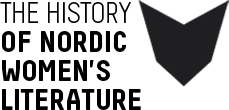A feeling that time is just passing by, and a longing for freedom, love, and a language that can contain life’s and the ego’s many sparkling facets makes itself felt in many texts by debut authors of the 90s. The poetry of the 1990s does not lament the loss of meaning or identity, or make the body an ultimate point of reference, but seeks glimpses and identity in movements and by changing direction.The literature of the 1990s primarily perceives life and the formation of meaning as transformation or movement. And it is in a movement around a female character that the ego is staged, with its entire baggage of pain, loneliness, longing, self-destruction, irony, and humour. The ego is invented, explored, thinks, or is present as a textual energy in the narrative or poem.The many young writers who made their debuts in the 1990s have become the object of much attention.
Tag: Aesthetics
Postmodern Storytellers
Vibeke Grønfeldt’s body of work has grown steadily and is now very comprehensive. However, despite the weight, despite the attention and respect surrounding her work, it stands strangely isolated in the literary debate. Just as the author still lives on the small Danish island of her birth, Samsø, so her work similarly insists on remaining on the fringe of culture.
Many contemporary women writers appear caught up in a paradox of form: on the one hand, women in contemporary literature create literary aesthetics that navigate the boundaries of genres and forms, and that do so by virtue of the subject matter and themes they work with; on the other hand, women writers are constantly evaluated in relation to relatively traditionally defined norms and expectations.Unless it is a matter of a handful of sanctioned geniuses, the most valuable literary efforts of women are still preferably accorded to their subject matter, which is more than welcome to break taboos and be daring or controversial. The aesthetic value of prose works is rarely associated with the form of the works.
The Danish author Jette Drewsen’s work from the 1970s has become a symbol of the upheaval in literature, politics, and private life which the new women’s movement sparked. Her novels are about, and speak to, the newly conscious middle-class woman; they gave rise to discussions about the new form of women’s literature and its message – and over time they became reflections on a female aesthetic which is under constant change.Whereas Jette Drewsen’s women throughout her 70s novels find a survival strategy, Anne Marie Ejrnæs begins her writing career with two novels about women whose lives fall apart due to the gap between ideals and social reality. The crisis is a central, and by now not wholly negative, concept in her oeuvre, which in latter years displays a particular interest in history.
Existential Poetry
On the New Language-Conscious Literature of the 60s and 70s
Throughout her work, Inger Christensen deals with the same fundamental conditions: the organic connections of existence, gender, the body, and consciousness with nature and the cosmos – and, by virtue of language, humanity’s special status in relation to this.Art is more than just the place where these conditions are referred to and described – as in early modernism. In the work of Inger Christensen, art is also the place where existence, gender, body, and consciousness can be put into play, explored, and tested, because they form the foundation of poetic articulation.
The Danish modernism of the 1960s, of which Dorrit Willumsen was a part, had turned, in terms of cultural criticism, towards the modern consumer and mass society and its influence on the existence of the individual. Modernity in the form of commodity society removes the ‘I’ from the self, rendering it a stranger to itself.In Dorrit Willumsen’s texts, the woman is portrayed from the very beginning as the primary victim and the preferred form of expression of modernity; she is both the antithesis and the quintessence of culture. Throughout Dorrit Willumsen’s oeuvre, it is the image of women that becomes the primary symbol of the conflict between outer and inner.
Modernism and Women in post-war Norwegian Poetry

